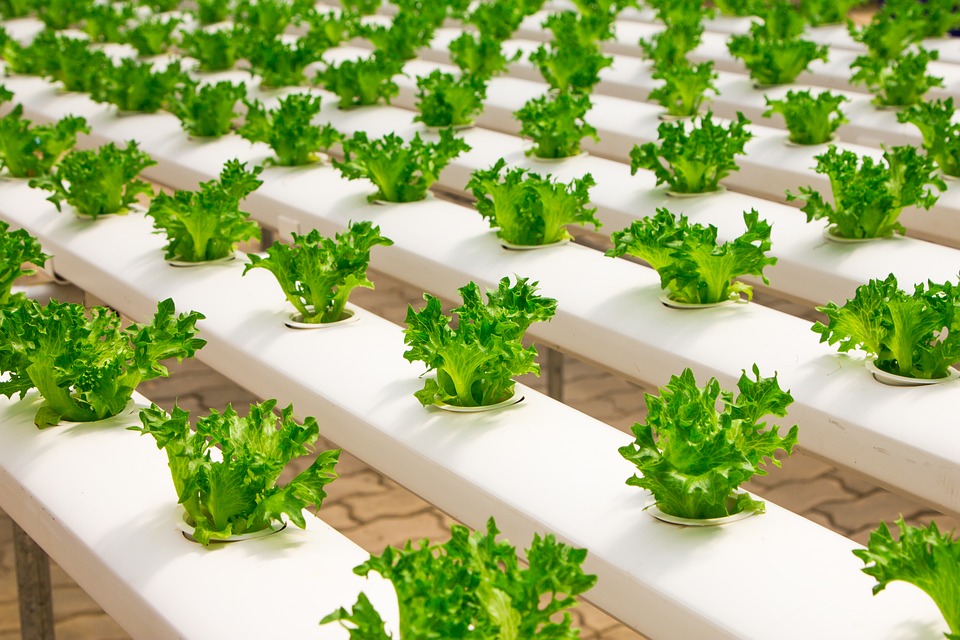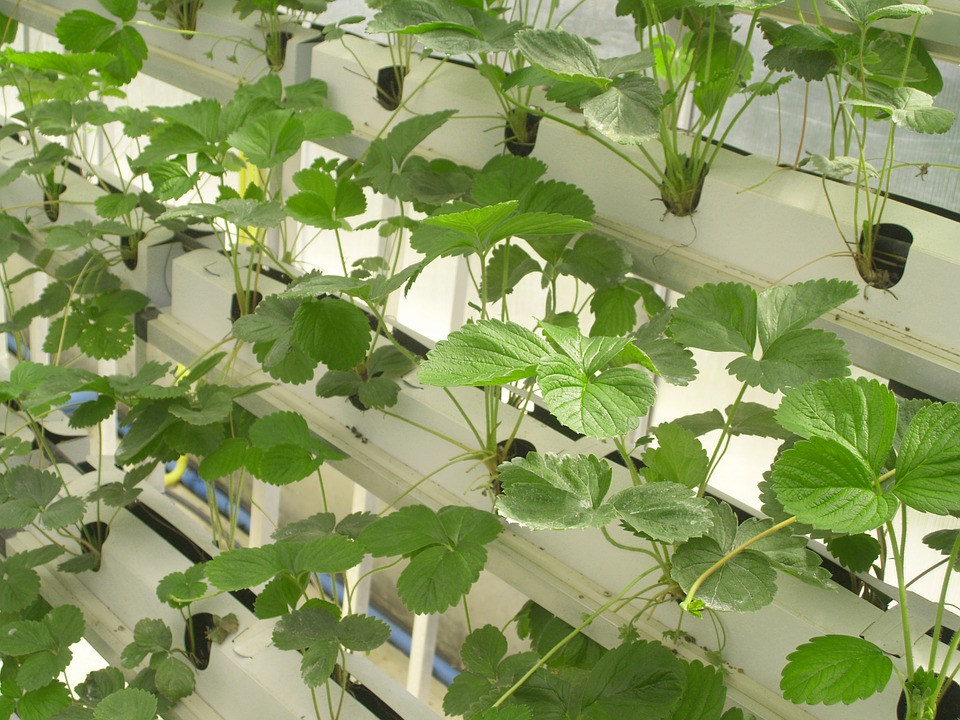Another Solution to Increasing Food Production

Another solution to increasing food production is a method that’s known as hydroponics. What is hydroponics? and when did it all start? Hydroponics is the process of growing plants without the use of soil, this method is also known as soilless growing.
The process involves growing plants in nutrient-rich water. That means no digging in the soil which at times can be tiring along with having to do a soil test and adding soil amendments.
Hydroponics is said to have had its humble beginnings around the 15th century now that is a long time ago. This method is not new but has been around for a while as we can see even though there have been some changes and improvements throughout the years the principles or basics still apply.
But to be successful with this type of gardening requires some know-how in order to reap a good reward for your efforts.
The pros of hydroponic
- A known fact about hydroponic is your garden plants will mature much faster and fuller because of the availability of nutrients that’s in the water which means that your plants will have an abundance of nutrients at their fingertips or should I say root tips, I think you get what I am trying to say
- Another advantage of hydroponics gardening is that there is less water wastage because the water system is built in such a way that water evaporation is less which means water conservation
- Can be grown anywhere
- No need to worry about weeds competing with your plants for water and nutrients
- Less labor cost
- Climate control. Sometimes the elements can affect a plant’s growth and development in a negative way but with hydroponics, plants are grown in a controlled environment
- Pest and disease problems are low
The cons of hydroponics
While all of the above-mentioned may be great there is another side to this type of gardening but don’t let that discourage you because we believe that with this type of garden you still have the upper hand.
- The cost must be considered when approaching this type of gardening because a hydroponics system can be pretty costly but then again it is all about setting aside a budget that is easy on your pockets.
- Equipment failure presents another problem because if a water pipe bursts your plants can be killed in a matter of hours because they are feeding nutrient-rich water
- Technical knowledge is required to be a success
Different types of hydroponic systems
The good news also about hydroponic systems is there are many to choose from so you can take your pick as to which system meets your needs.
- Drip System
- Wicking
- Deepwater Culture
- Ebb & Flow
- Aeroponics
- Nutrient Film Technique
1. Drip System-this system operates by allowing the nutrients to be released slowly or in small amounts. With this type of system, it is best to use growing mediums such as coconut coir, peat moss, or Rockwool.
The disadvantage of this system is that it tends to clog. Particles from nutrients collect in the emitter that is responsible for this. So keeping the system unclogged may become a challenge.
2. Wicking is another method of hydroponics that involves cotton surrounded by a growing medium. The nutrient solution has one end of the wick material placed in it. The plant’s roots are then wicked with this solution. Mediums such as vermiculite and perlite should be used when using this method.
3. Deepwater Culture involves having the roots of your plants suspended in a nutrient-rich solution. To keep the roots safe or in good shape an aquarium air pump is needed to provide oxygen. To prevent algae from forming keep light from getting into this type of system.
4. Ebb & Flow is known as a drain and flood hydroponic system. The way this system works is by allowing the growing area to be flooded with the solution which contains nutrients.
The nutrients return to the reservoir and the process starts all over again. All of this is controlled by a pump that is attached to a timer.
5. The aeroponics method involves the plant roots being misted with a nutrient solution as it hangs in the air. The nutrient solution is released by what was discussed earlier which is misting the roots or by a pond fogger that requires the use of a coated Teflon disc.
6. The nutrient film technique method works by having a continuous supply of nutrient solution that moves over the plant’s root. The method involved here allows the plant to take in oxygen which speeds up the rate at which the plants grow.
A list of plants that can be grown hydroponically

1. Basils.
2. Rosemary.
3. Sage.
4. Lemon Balm.
5. Cabbage.
6. Lettuce.
7. Potatoes.
8. Green Beans.
9. Tomatoes.
10. Strawberries.
These are just a few of the many lists of plants that can be grown using these amazing methods that have proven to work wonders.
Maintenance of your hydroponic system
1. Check your system on a regular basis because broken pipes, connections, and other damage can be overlooked that can cause issues.
2. Filter Check-keeping the filter clean will prevent a build-up that can attract pests.
3. Changing the water every two weeks is great to stay ahead of your game.
4. Doing a PH check on the regular is a must. The ph range should be in the area of 5.5-6.5. The EC levels are also important with this type of garden.
5. Providing proper aeration is a must for healthy root growth, therefore, it would be a great help in adding extra air stones to maintain a good amount of dissolved oxygen.
6. Water loss may need to be topped off in the hydroponic’s reservoir due to water loss because of evaporation. Taking this action will be of great benefit to your hydroponics system.
7. Maintaining the proper temperature is so important because when temperatures rise the level of dissolved oxygen level starts to move downwards which will cause the growth of plants to slow down. the nutrient solution should be kept between 65-75 degrees.
The final word
This is what makes gardening so amazing. There are so many ways to garden and hydroponics gardening is one of many. Hydroponics is popular and has been used by so many people even though more advice methods require training the work is worth the effort.
So why not give this type of garden a try and experience the joy of gardening with this method I am sure you will love it as your gardening indoors. What a way to escape the burning heat of having an outdoor garden that can leave you feeling drained at times so what about it let’s give it a try and tell me what you think. I will be waiting.
About the author
Norman loves being in the garden, both at home and for his job....
he is 'Natures Little helper' being outdoors, growing his vegetables and flowers from an early age.
Now having spent over 22 years in the profession he want to give some of his knowledge to others...
his vast array of hints and tips you will find scattered over this site will help you no end growing plants in your garden.

Wow, what a pleasure to walk in and explore your garden! I will surely be back to see more.
I never heard about hydroponics. I eat a plant-based diet, and I grow my own sprouts. I have some questions: how big should the space to start a hydroponics garden? You mentioned that technical knowledge is required, is there any training available?
As I eat lot’s of plants, the hydroponics garden will be the best solution for me.
Thank you for sharing this informative article. I’ll pin your website for future reading.
Hello Dany so happy to see you. Hydroponic gardens are really amazing. The size of the garden depends on the amount of space that is available. There is online courses that are available. Hope this help, please let me know how it goes. Again there are many sizes these garden can be constructed. From small, medium to large so it depends on the space.
Hi Norman,
Amazing! I never knew plants could even grow this way!
Hydrophonics sounds like a very successful and more efficient way of growing plants. I do like to think I am good at gardening and always enjoyed viewing my own vegetables.
It does actually make sense from the details you have listed out as there is an abundance of nutrients available.
What necessities would I need to build my own?
Thank you
Hello so happy to meet you. There are many styles of hydroponics gardens which can be purchased as a kit that will really work wonders just check with your garden center or hard ware store for supplies. Hope this help and wishing you the best of success with your garden project. Have a wonderful day.
Hello Norman,
I am listening more and more with the growing of hydroponics.
I am a farmer for many years I have had a beautiful blueberry plantation.
I can see the plants in the images very well. Hydroponics is a system that requires specific knowledge in the matter before starting.
Query: Could blueberry develop well in hydroponics? Will I thank you for your opinion?
Thank you! Claudio
Hello so good to meet you and it is so wonderful to see that you are a part of the soil. It is worth giving it a try. I have heard of persons that did so with success. Give a try and please let me know how it goes, all the best to you and have a good day.
Hi … I love your website! What a wonderful resource for gardeners or gardeners wanna be .. lol! Now I’m anxious for spring to work on gardening! I will go back to your website as a resource because there is so much information. It is almost December 1st … I do have indoor plants but is there something I could start indoors in order to get a head start on my gardening? I have a clean slate at my home … I have a big enough yard and would like to add my touch to it. Where do I start? Thanks for your website … I will visit it often! Have a good day!!
Hello Renee so happy to meet you. Now as to plants that you can start indoors, it depends on what you want to plant for example if you are thinking about installing a vegetable garden next spring then some of your choice of vegetable would be corn, carrot, beans, onion, lettuce and so fort. Herbs would be chives, mint, basil, parsley etc.
In my category section I have written a few article on gardening for the beginners. Feel free and browse because I believe you will find something that can help your garden projects to be a success. All the best to you and please let me know how it goes. Have a good day.